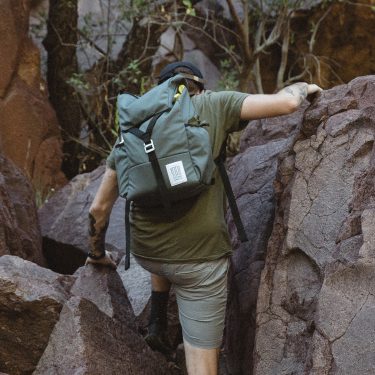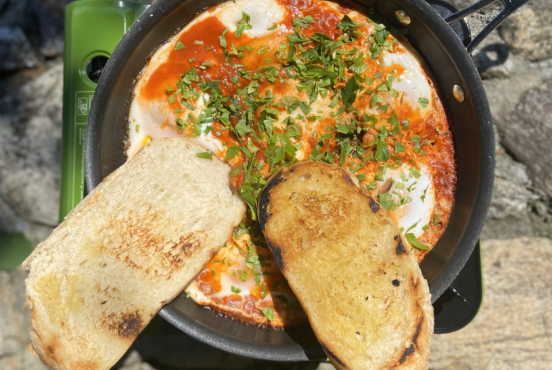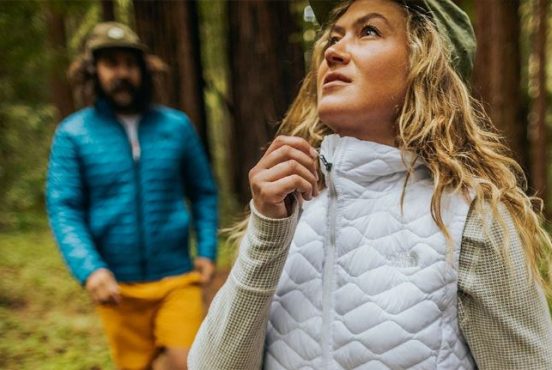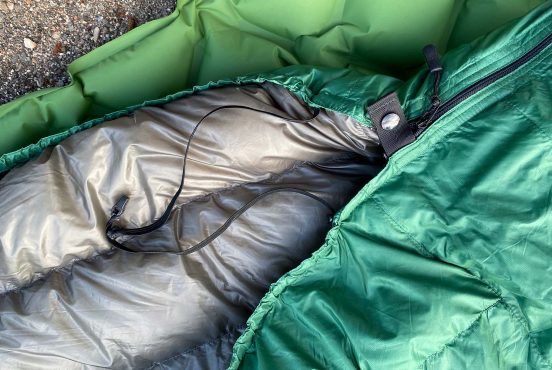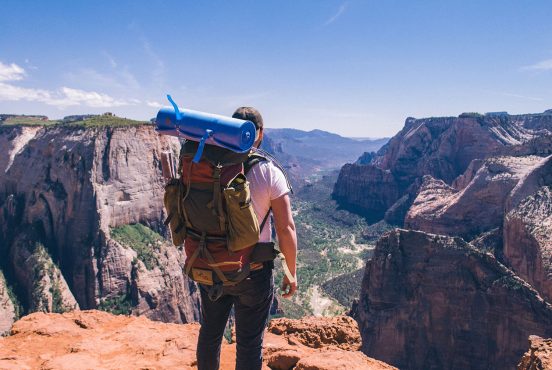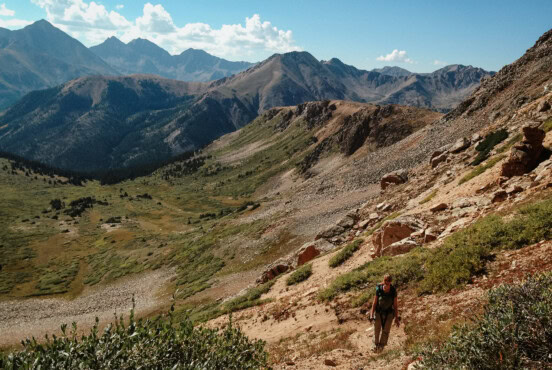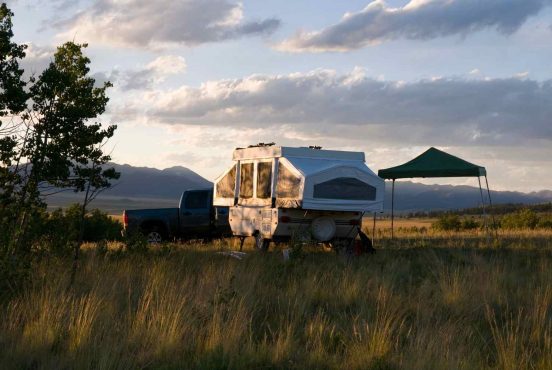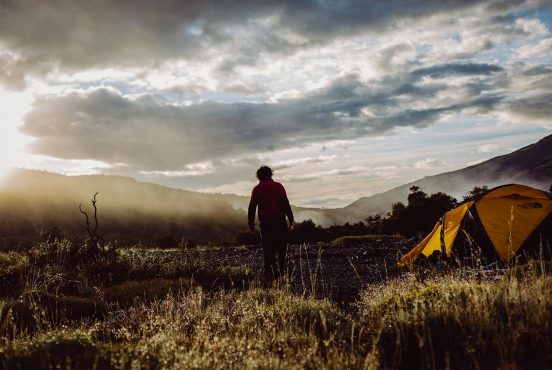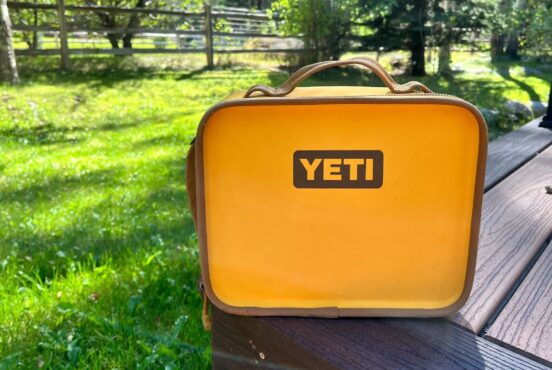We research, test and evaluate outdoor gear based on a number of factors, including our writers’ experience and expertise, trusted user reviews and more. We may earn a commission when you make a purchase through our links. See our editorial policy to learn more.
Discover the best backpacking stoves for fuel-free adventures.
Sitting outside in a serene backcountry campground, there’s a special kind of magic in the crackle and warmth of a fire. Wood-burning backpacking stoves offer more than just practicality — they reconnect you with nature, offering a peaceful retreat from the hustle and bustle of modern life. This timeless charm is one reason why these stoves are making a comeback.
Yes, there are fancier options with higher tech. But for many adventurers, the draw of a wood-burning stove is irresistible. It’s not merely about cooking the easiest camping meals – it’s about evoking the nostalgia of simpler times and embracing the satisfaction of sourcing your fuel and kindling a fire. Besides, with twigs and sticks providing an endless fuel supply, you’ll save space and weight by ditching those bulky fuel canisters on long treks.
While wood-burning backpacking stoves may seem old-school, the new models are compact, lightweight, and incredibly efficient. We painstakingly tested out the seven wood-burning backpacking stoves below. Here’s our thoughts.
Top Picks: The Best Wood-Burning Backpacking Stoves
- Best Overall Wood-Burning Backpacking Stove: Firebox Freestyle Modular Stove
- Runner-up for Best Wood-Burning Backpacking Stove: Solo Stove Lite
- Most Packable Wood-Burning Backpacking Stove: Vargo Hexagon Wood Stove
Best Overall Wood Burning Backpacking Stove:

Firebox Freestyle Modular Stove
The Firebox Freestyle Modular Stove is a modular marvel. This pint-sized powerhouse redefines versatility for wood-burning stoves in the backcountry, which is why it won our top spot. Lightweight, compact, and a cinch to use, it is perfect for the adventurous soul who craves a customizable cooking system.
Why settle for one setup when you can have a multitude? Start with a standard four-sided stove, which unfolds and locks into place without any setup. Feeling fancy? Remove a side, connect it to another Freestyle Modular stove, and voilà —a six-panel, 8-inch cooktop. Or, channel your inner architect and transform it into a six-panel, 7-inch hexagon fire ring. With five levels for firesticks, you can easily tweak the fire height and pot placement or even toss a grill grate on top. Although I mainly used this stove in its standard square setting, I fell in love with its flexibility for multiple situations.
The only downside? It’s not exactly plug-and-play when you start making adjustments. You’ll need to pull out the pins to reconfigure, and there’s nothing like the heart-pounding moment when you think you’ve lost one in the dirt…..(Thankfully, I found mine!)
When it’s time to pack up, the Freestyle folds into a tidy, compact square. Plus, the metal carrying case doubles as a fire pan tin, making it easy to adhere to Leave No Trace principles while keeping soot out of your pack.
For those craving a more minimalist approach, the 3” G2 Firebox Nano is your go-to. Weighing less than 4 ounces and folding down to a slim .25”, this stove is efficient without the extra modular frills.
Tech Specs:
- Weight: 8 oz
- Size: 4” x 4”
- Material: Titanium
Pros & Cons:
- Pro: Extremely versatile with multiple configuration options
- Pro: Comes with a Grill and FireSticks
- Pro: Metal carrying case also can be used as a fire pan tin
- Con: Numerous parts if you start adjusting sizing
Runner-up for Best Overall Wood Burning Backpacking Stove

Solo Stove Lite
As one of the most well-known names on the market, it’s no surprise that Solo Stove made the list as one of the best wood-burning backcountry stoves. The Solo Stove Lite is the smallest and lightest stove in their lineup, weighing 9 ounces and 5.7” tall.
Crafted from rugged 304 stainless steel, the Solo Stove Lite is solidly made and built to withstand the wild. The efficient design maximizes airflow by strategically placing holes along the bottom, while the double-walled chamber produces less smoke than the single-panel model. Starting the fire was simple, but you do have to wait for the larger sticks to burn down to put your pot on top.
While many other stoves pack flat into neat little packages, I was initially hesitant that the one-piece design was bulkier than others. But this stove boasts a zero-setup process. After sooty black fingers from breaking down other stoves after use, I appreciated that I only had to put the stove inside the companion Solo Stove Pot 900 to create a compact, all-in-one cooking system and that I had one less thing to clean—my hands.
Tech Specs:
- Weight: 9 oz
- Size: 4.25” x 5.7”
- Material: Stainless Steel
Pros & Cons:
- Pro: No setup necessary.
- Pro: Easy to start a fire and keep it going.
- Pro: Leave no trace design
- Con: Doesn’t fold.
Most Packable Wood Burning Backpacking Stove

Vargo Hexagon Wood Stove
For backcountry campers looking for a featherweight fire stove to slide into their pack, the Vargo Hexagon Wood Stove is the smallest and lightest stove I tested. With a slim, six-single panel consecutive and compact design and an easy, all-in-one set-up, it lies completely flat once folded and fits inside a tiny nylon carrying case.
The conical design is compact, clever, and crafted for lightweight adventures. I couldn’t believe how small and featherweight the stove was in my hands. Setup is extremely simple; a seamless, snap-into-place design prepared me to cook in seconds. The interior cavity to hold sticks and fuel was small, but thanks to its tapered design that channels heat upwards, I still found it hot enough to boil water efficiently.
To fuel the fire, you have to open the hinged access door, but be warned that opening it is hot (!) I recommend using a stick instead of your fingers when opening it (Hey, no one said testing was easy….) But it’s a minor inconvenience given the stove’s small size and weight. Additionally, there’s no bottom plate to catch ashes, so you’ll have to take another step to clean up your cooking to Leave No Trace.
For the minimalist backpacker seeking simplicity without sacrificing functionality, the Vargo Hexagon Wood Stove is your go-to.
Tech Specs:
- Weight: 4.1 oz (Titanium)
- Size: 5” x 3” x 4”
- Material: Titanium or stainless steel
Pros & Cons:
- Pro: Super lightweight
- Pro: Folds completely flat
- Pro: One-piece design
- Con: No bottom plate to catch ashes
Best of the Rest

Bushbox LF Titanium
The Bushbox LF Titanium stove is a German-engineered gem. It’s incredibly well-crafted, folds open with ease, and tucks neatly (and flat) into a rugged canvas carrying case, which was ideal for keeping soot out of my pack. This sturdy stove is made predominantly from titanium but features a stainless steel bottom plate to prevent possible warping under high heat.
What sets the Bushbox apart from other stoves? Double hinges along the corners and sides of the stove are as smooth as butter to open and fold back onto themselves. The whole system is connected, eliminating the need to keep track of parts (because I already have enough to keep track of in my life). Setting up is a snap: unfold it and drop the floor and the grill grate (both attached) to secure the sides. Slide in the optional trinkets for smaller pots, which I also used as handles to carry the hot stove, or add the grill grate, which was ideal for toasting bread.
While many backpacking stoves are unstable because they’re so lightweight, the Bushbox stove is super solid, sturdy, and easy to set up and use. It’s also the perfect size: big enough to stoke a decent-sized fire inside its four-walled design (which has an opening to feed sticks through) but small enough for compact carrying.
Yes, it’s slightly heavier than some competitors— I could feel the weight of quality and craftsmanship in my hands —but those extra couple of ounces are worth it for this high-performance wood-burning backcountry stove. If you’re anxiously counting ounces, consider the lighter weight and more straightforward 3-sided design of the Bushbox Ultralight at a mere 2.4 ounces.
Tech Specs:
- Weight: 10.5 oz
- Size: 3.9” x 3.9” x 5.5”
- Material: Titanium
Pros & Cons:
- Pro: Great design opens and folds easily while packing up small
- Pro: Solid and well-built
- Con: Slightly heavier than other stoves

Ganesha Ultralight Stove
What a win: a high-performance stove that’s lightweight, efficient, and strong for adventurers yet also supports humanitarian villagers in Nepal. Designed in Colorado by Brice Hoskin after his travels through rural Nepal, the Ganesha Cookstove Project seeks to provide portable and powerful cookstoves to both backpackers and villagers in South Asia.
The Ultralight Stove is the smallest in the Ganesha Cookstove Project’s lineup. But when folded flat, it is almost twice as long as the other models. Once popped open, the stove is surprisingly spacious, especially given that it weighs just 7.8 ounces. The interior is big enough to handle larger sticks that burn longer, so I could spend less time feeding twigs and more time kicking back at camp.
Thanks to its double-walled design, the stove was smokeless once I got it hot enough, perfect for those pristine wilderness mornings. Plus, its interconnected setup means I didn’t have to hunt for rogue parts at the bottom of my pack.
While the Ultralight Stove is a backpacker’s dream, the real magic lies in its mission. Hoskin’s Ganesha Cookstove Project isn’t just about boiling water in the backcountry; it’s about bringing cleaner, safer cooking and reducing smoke exposure to the women of Nepal by using larger models of the same stove. Having traveled extensively through Southeast Asia myself, I appreciate Hoskin’s initiative to improve the lives of female villagers. By backing this startup, you’re not just fueling your next adventure — you’re also fueling change for communities that need it most.
Tech Specs:
- Weight: 7.8 oz (titanium)
- Size: 5.25” x 5.25” x 6.8”
- Material: Titanium or stainless steel
Pros & Cons:
- Pro: Large interior cavity holds more fuel
- Pro: Simple set-up
- Pro: Make a humanitarian impact while you make your food
- Con: Packed dimensions are larger than other stoves (9.9” x 6.9” x 0.5”)

BioLite Campstove 2+
The BioLite Campstove 2+ isn’t just any wood-burning stove; it’s a personal campfire that doubles as a power bank. Thanks to a USB port, this genius stove harnesses fire energy to charge your devices, which is compatible with most USB-chargeable gadgets.
At first, I was skeptical. But instead of getting on my hands and knees to put my face to the ground to blow into a stove to get it going, I just pushed a button. Once I clicked on the fan, those internal jets kicked into gear, circulating air and turning my humble twigs into a roaring blaze within seconds. It’s an idiot-proof firestarter — genius. With four fan speeds, you can fine-tune your fire’s intensity. Even on the lowest setting, it generated enough heat to cook my water efficiently and charge my devices simultaneously.
I must admit, as cool as the Campstove 2+ is, it’s on the heavier side. At two pounds, it’s significantly bulkier than other options. The battery pack, while cleverly nestled inside the cooking chamber, still takes up ample space. But let’s be honest; being able to cook your food and charge your gear while the fan keeps the fire stoked without constant babysitting? That’s a trade-off worth considering.
If you’re searching for a powerful, smokeless, and user-friendly wood-burning stove offering on-demand electricity, the BioLite CampStove 2+ is your ticket to backcountry bliss. Say goodbye to carrying extra fuel and portable chargers – this stove covers you on all fronts.
Tech Specs:
- Weight: 2.06 lb
- Size: 5” x 7.91”
- Stainless steel
Pros & Cons:
- Pro: Fan automatically fuels your fire
- Pro: Charges devices while cooking your meal
- Pro: Smokeless fire design
- Con: Heavier and bulky design

EmberLit UL Original Titanium Stove
The EmberLit UL Original Titanium Stove is an ultralight, no-frills, wood-burning backpacking stove that weighs just under six ounces. Designed by Mikhail Merkurieff, who has spent a lifetime tinkering in his garage, the stove has streamlined features with everything you need and nothing you don’t. All five pieces stack flat in the carrying case, making it a backpacker’s dream.
The EmberLit UL’s design is delightfully simple: four single panels and a floor piece that hook together with tabs and slots, ensuring it will last for a long time. While it’s easy to put together, it still took me a few minutes to assemble and disassemble it after use, resulting in my digits being covered in sooty ash.
Standing 6 inches tall, this stove is perfect for feeding longer sticks. So, while I didn’t love the additional task of putting the stove together, I did appreciate its bigger size to burn more fuel for longer without sacrificing weight. Side holes near the base ensure optimal airflow for a robust fire. But there are no holes in the Emberlit base plate. Merkurieff explains that while additional holes would help the stove burn hotter, he designed the Emberlit to maintain an efficient burn that is just right for cooking food.
Tech Specs:
- Weight: 6 oz (titanium)
- Size: 5.5” x 5.5” x 6”
- Material: Titanium or stainless steel
Pros & Cons:
- Pro: Extremely lightweight
- Pro: Folds flat
- Pro: Simple design with no extra frills
- Con: Assembly required for set up and break down
Common questions on using a wood-burning backcountry stove
Why should I buy a wood-burning stove over a gas stove?
There are many who prefer backpacking without a stove. So, why hassle with a wood-burning stove when you could go without, or even just turn a knob on a gas canister? Gathering sticks and tending a fire might seem like an archaic chore compared to the flick-and-cook convenience of gas. But there’s a hidden benefit here.
Yes, wood-burning stoves demand a bit more attention and TLC. You’ll need to forage for twigs and keep a watchful eye on the flame. But the payoff? You can leave those bulky fuel canisters behind. On epic, multi-day backpacking adventures, every ounce matters. Ditching a fuel canister opens up space and weight in your pack for the stuff that really counts—like some sweet snacks, a great book, or cozy camp shoes. Plus, it also means you won’t be playing the gas canister shuffle to calculate how much fuel is left in one can versus another.
So, while gas might win in the convenience category, wood-burning stoves are ideal for long-haul trekkers who want to lighten their load.
Where to use a wood-burning backcountry stove
When setting up a stove, look for existing fire rings or pits first — there’s no need to reinvent the wheel. Pick a spot shielded from the wind and free of anything that might catch fire, like dried leaves, branches, or brush. Ensure the stove is on a flat, sturdy surface to avoid any culinary catastrophes.
After the fire has burned out and the embers are cool, scatter the ashes and cover them with dirt and leaves to uphold the Leave No Trace principles.
What are suitable materials to use for a wood-burning stove?
To start a fire, use dried kindling, such as dry leaves and pine needles, or artificial fire starters. As the fire grows, add larger kindling and small sticks or twigs to continue feeding it. Really, anything you find on the dry forest floor can be used.
Should I use stainless steel or titanium?
Choosing between titanium and stainless steel stoves is like picking your adventure partner: each has its strengths and quirks.
Titanium, the featherweight champ, is perfect for those who count every ounce in their pack. It’s lighter but less dense, which means it can potentially warp over time and with extensive use.
On the flip side, stainless steel might weigh you down a bit more, but it’s built like a tank. It’s designed to last and handles heat like a pro. For the camper who plans on frequent use, stainless steel is your rugged, reliable choice.
What else do I need to know?
As delightful as wood-burning stoves are, there are a few hitches you should be aware of.
First, before you embark on your wilderness adventure, check for fire bans. Wood-burning stoves are a no-go in areas with fire restrictions. Plus, a glance at the weather forecast is a must. Why? If rain’s on the horizon, you may struggle to locate dry fuel. And, let’s face it, if there is rain, you can’t retreat to your tent to set up a wood-burning stove.
Another thing to keep in mind: getting a fire going with a wood-burning stove takes a bit longer and requires constant tending to keep it fueled. But hey, when you’re out in the wilderness, you have all the time in the world, right?
Seen in: Backpacking Gear, Gear

